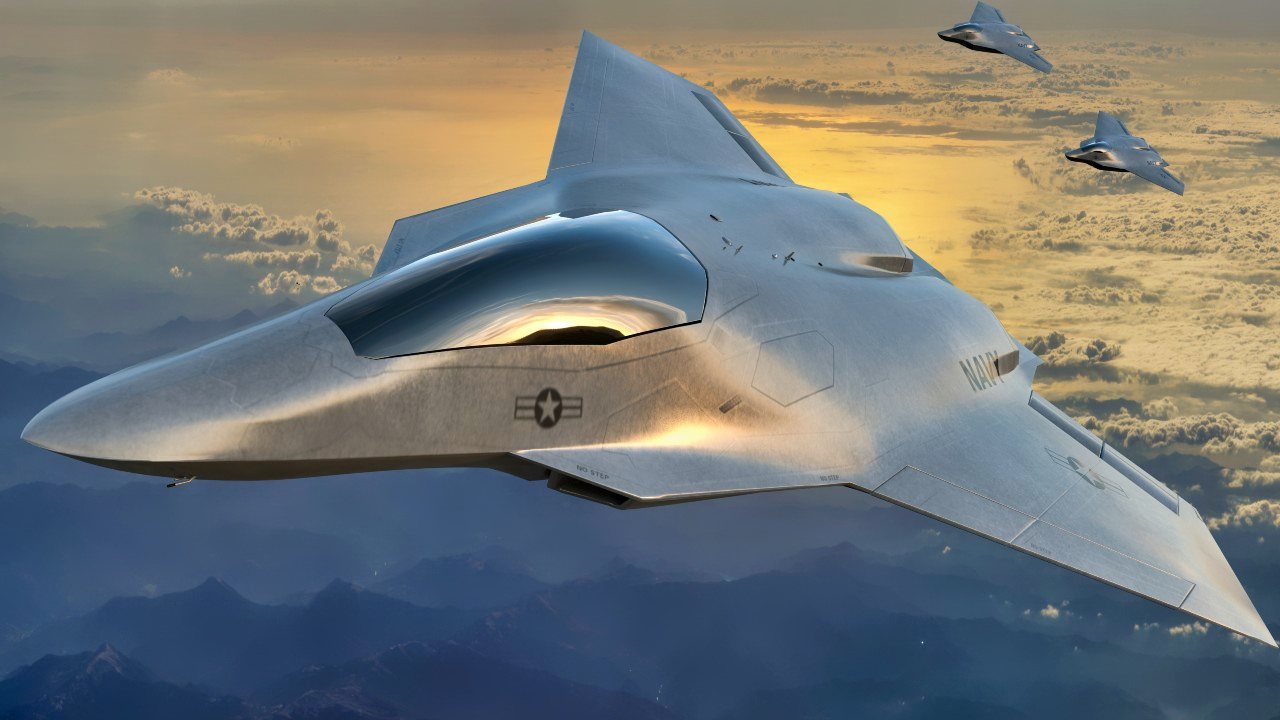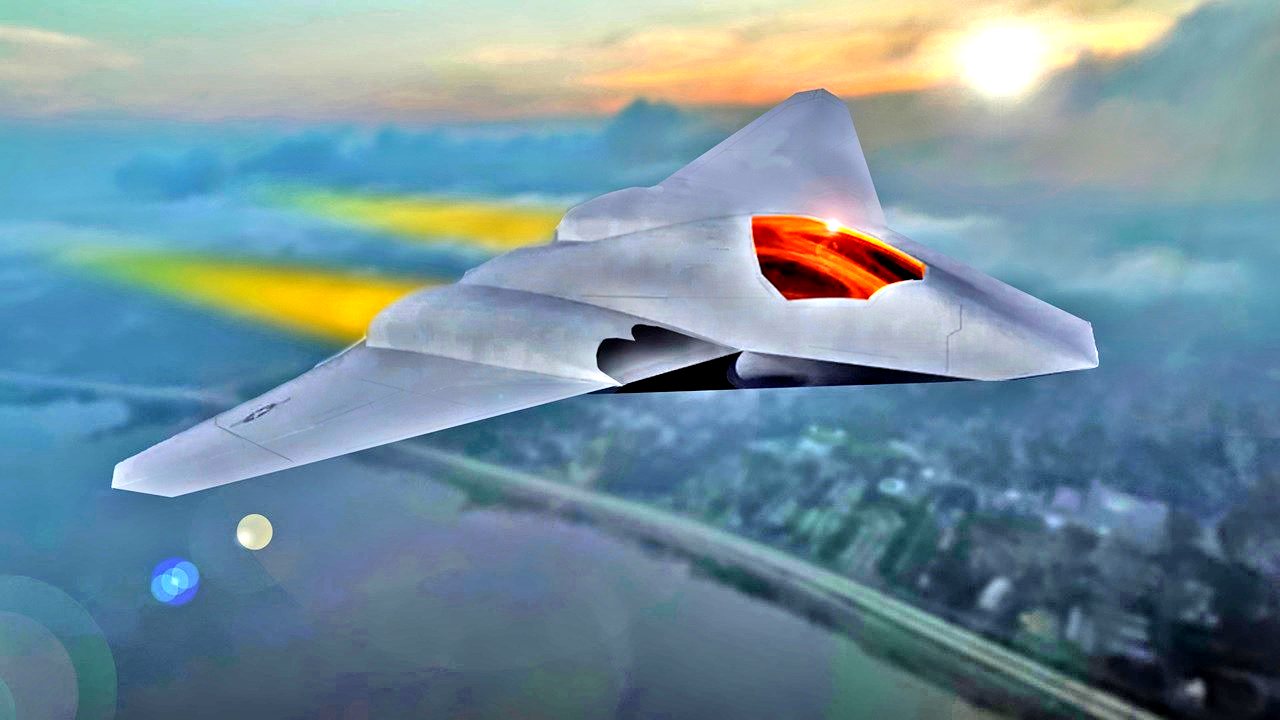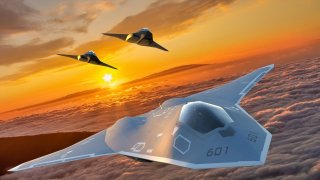Why Build the NGAD 6th Generation Fighter? Drone Swarms Could Change Everything
The NGAD is already planned to be a “family of systems” that features an unmanned “loyal wingman” concept. Why not dump NGAD and go all drone swarms?
No More NGAD? We have covered the U.S. Air Force’s Next-Generation Air Dominance fighter extensively. The NGAD has whiz-bang characteristics and is a sixth-generation airplane that will be highly-stealthy and chock full of modern weapons.
But the NGAD could cost the military hundreds of millions a piece, according to the Secretary of the Air Force.
Why not plow that money into unmanned vehicles or a new drone that could swarm the enemy and fight wars without the risk of pilots getting shot down?
NGAD: It’s One Big Drone Family
The NGAD is already planned to be a “family of systems” that features an unmanned “loyal wingman” concept.
This means that drones would fly in a formation with the NGAD and either collect intelligence, surveillance, and reconnaissance data or launch stand-off munitions and even act as a decoy.
It stands to reason that the NGAD could just be removed from the equation, so the loyal wingman drones simply take over offensive missions.
This would save the billions of dollars that it will take to get the NGAD off the ground by the end of the decade.
LOYAL WINGMAN CONCEPT IS MATURING
The Air Force is perfecting its drone teaming concept with the artificial intelligence-enabled Skyborg system that will allow for better Loyal Wingman attributes.
Boeing has a $115 million contract to deliver three Loyal Wingman unmanned craft using Skyborg.
This would make for a total of six Loyal Wingman drones in the fleet. Boeing is not the only Loyal Wingman player.
The Air Force Research Laboratory has the Kratos XQ-58 Valkyrie unmanned combat aerial vehicle it has been testing for Skyborg. General Atomics features its MQ-20 Avenger drone program.
TRY TO STOP A GREMLIN SWARM
Additionally, DARPA boasts its X-61A Gremlins project which is a swarm of smaller autonomous drones deployed out of a cargo plane.
These have been tested successfully and have launched and been recovered in recent evaluations starting in 2021.

HUMAN PILOTS COULD TAKE A BREAK
While human fighter pilots would resist such an all-out dependence on drones that would necessitate sidelining or even canceling the NGAD outright, modern warfare will still require drones in fighting roles. The aerial war in Ukraine shows that air superiority is not automatically assured.
Air defenses are surviving and even thriving by shooting down Russian fighters. Stealth drones can serve in recon roles with electromagnetic, radar, or visual sensors. They can also conduct electronic warfare and jam enemy surface-to-air missiles then deliver their munitions in either stand-off roles or over a target. No human pilot is necessary.
DRONE SWARMS SPOOF RADARS
Drone swarms have advantages too. Their numbers could overwhelm enemy radar that cannot handle so many targets at once. They could also serve as decoys while the larger Loyal Wingman drones hit targets with air-to-ground missiles and other precision-guided munitions.

EJECTING IN THE INDO-PACIFIC
An aerial fight with China will also be hairy and despite the skill of human pilots in their F-35s and F-22s there will still be losses and aviators may have to eject and survive in large expanses of ocean.
They could also be taken prisoner by China which would serve as a massive propaganda win for the Chinese military.
HUMANS VERSUS MACHINES: THE NGAD DEBATE IS ONGOING
The unmanned Loyal Wingman concept still needs a human brain to “quarterback” the drones even if they are autonomous drone swarms. But this could be done with the F-35 and F-22 instead of building the NGAD. So, is the NGAD dispensable with all the advantages of drones outlined above?
That will be up to the Air Force, Pentagon, and Congress. As Skyborg and Loyal Wingman technology gets better, the Air Force may not have to iterate the NGAD, and the money saved can be invested into the drones. This may become one of the biggest debates in combat aviation in the coming years – determining the ratio of unmanned craft to birds flown by humans. We will keep you posted on how this debate turns out.
About the Author: Brent M. Eastwood
Brent M. Eastwood, PhD, is the author of Humans, Machines, and Data: Future Trends in Warfare. He is an Emerging Threats expert and former U.S. Army Infantry officer.
All images are from Shutterstock.


